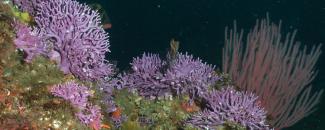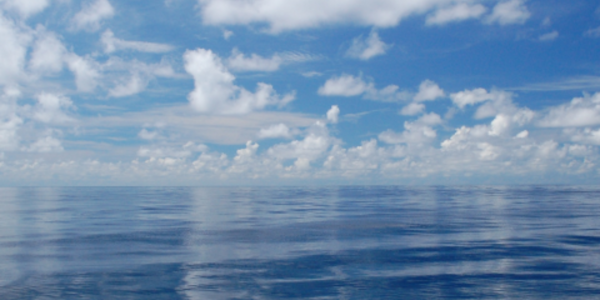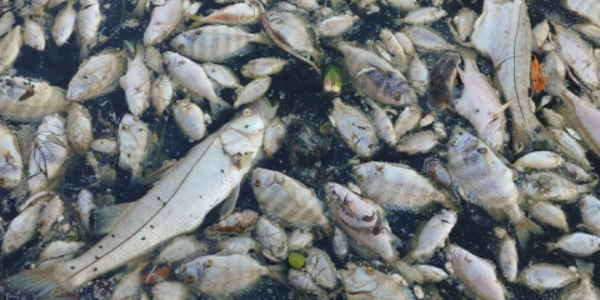Discovering Deep-Sea Corals with NCEI

When you think of the deep ocean, do you think of an abyss: deep, dark, and deserted? The seafloor may be deep and dark, but it is thriving with colorful life. Deep-sea corals can be found worldwide. They come in many colors—purple, red, gold, pink, orange—and a variety of shapes. Even though they resemble plants, corals are animals and belong to the same family as jellyfish and sea anemones. Scientists have identified over 3,000 species of deep-sea corals.
Deep-sea corals can live for hundreds or thousands of years, surviving by trapping tiny organisms for food in passing currents. They create complex communities at ocean depths of more than 10,000 feet. Some deep-sea coral species form reefs that slowly grow more than 300 feet tall.
Deep-sea corals are more than just beautiful. They provide vital habitats for numerous fish and invertebrate species, including commercially important grouper, snapper, sea bass, rockfish, shrimp, and crab. They are also home to organisms that produce chemicals with great potential for biomedical uses. For example, scientists discovered that two sponges that grow in deep-sea coral ecosystems contain compounds with anti-inflammatory and antiviral properties.
Managing Deep-Sea Coral Data
NOAA was an early leader in exploring deep-sea habitats. In 2009, NOAA established the Deep-Sea Coral Research and Technology Program (DSCRTP) to increase scientific understanding of deep-sea coral ecosystems. DSCRTP collects and manages deep-sea coral and sponge occurrence records and makes them available to the scientific and resource management communities. To meet the challenge of managing and distributing these datasets, NCEI worked closely with DSCRTP and partners at NOAA's National Centers for Coastal Ocean Science to produce the NOAA Deep-Sea Coral Data Portal. The portal provides a gateway to deep-sea corals and sponge data, images, and technical reports from research funded by DSCRTP and its many partners.
As part of this collaborative effort, NCEI hosts the National Deep-Sea Coral and Sponge Database, which contains over eight hundred thousand records, including almost one hundred thousand images of corals and sponges. This observational database contains data from more than 85 partner data providers and is continually updated. The data has led to the identification and, in some cases protection, of other coral communities, including those in shallower water.
Uses of Deep-Sea Coral Data
Scientists and decision-makers alike use deep-sea coral data. For example, the eight regional U.S. Fisheries Management Councils use the information to help identify Habitat Areas of Particular Concern (HAPC)—areas that provide important ecological functions and/or are especially vulnerable to degradation. Also, NOAA’s National Centers for Coastal Ocean Science used the data to create the Gulf of Mexico Predictive Modeling of Deep-sea Coral Habitat Viewer, which also includes corals at shallower depths.
The data are also important for conservation efforts. Once damaged, corals and their communities may take centuries to recover, if they recover at all. NOAA used the data in its proposal to extend the existing protections of Flower Garden Banks National Marine Sanctuary. The sanctuary, located in the Gulf of Mexico, benefits from limits on bottom-disturbing activities that could impact sensitive biological resources and geological features. Deep-sea corals are vulnerable to fishing gear, such as bottom trawls that disturb the seafloor. They can also be damaged by activities associated with energy exploration and development, cable deployment, and other activities that disturb the seafloor.
Dive Deeper
Want to explore the world of deep-sea corals? Check out the digital map that links to all of the records currently in the National Deep-Sea Coral and Sponge Database. You can search by taxon, region, time, and depth. You can also find photos of a wide variety of these vital deep-sea dwellers.



